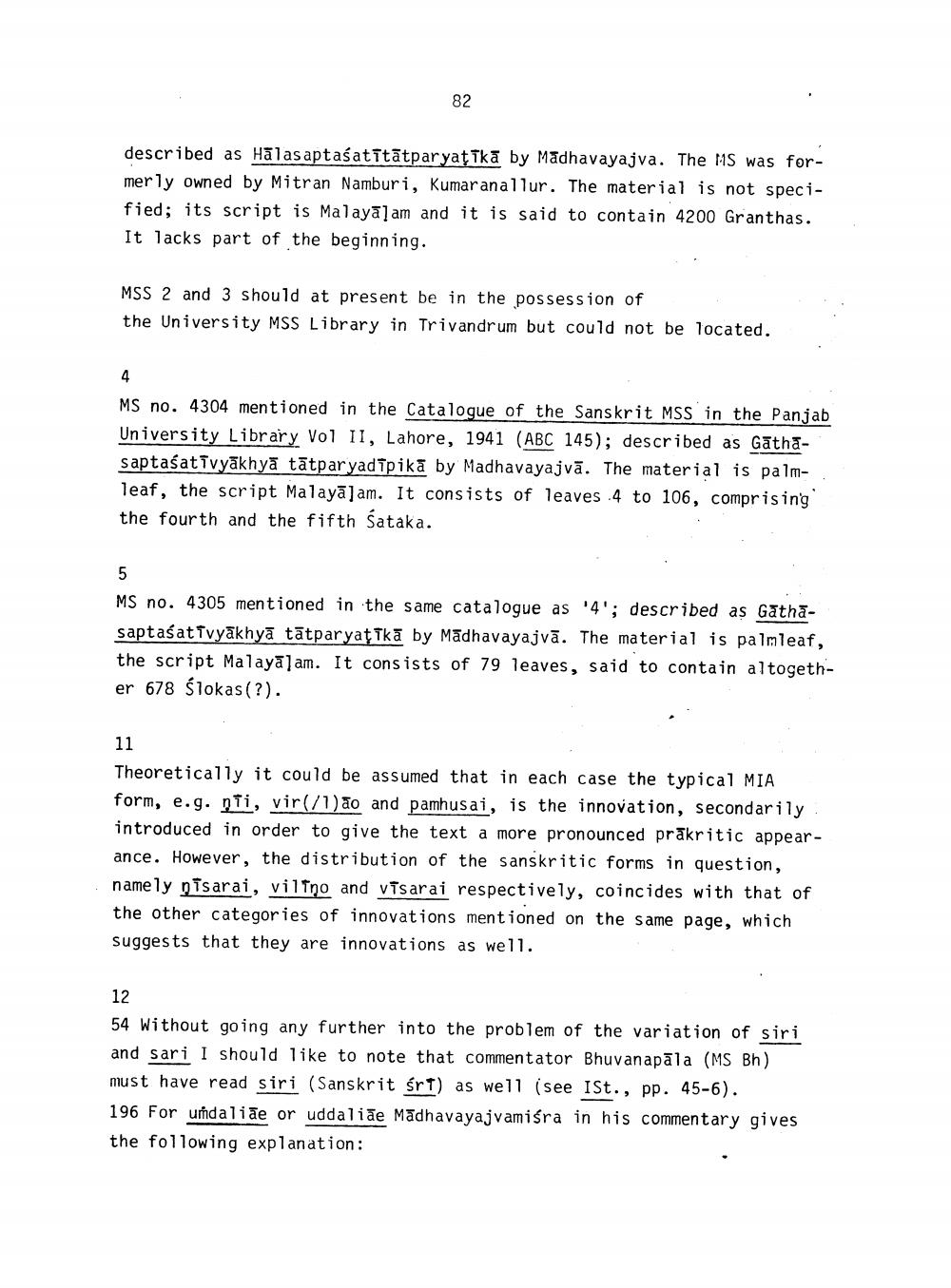________________
82
described as Hālas aptaśatītātparyaţika by Madhavayajva. The MS was formerly owned by Mitran Namburi, Kumaranallur. The material is not specified; its script is Malayalam and it is said to contain 4200 Granthas. It lacks part of the beginning.
MSS 2 and 3 should at present be in the possession of the University MSS Library in Trivandrum but could not be located.
MS no. 4304 mentioned in the Catalogue of the Sanskrit MSS in the Panjab University Library Vol II, Lahore, 1941 (ABC 145); described as Gāthasaptaśatīvyākhyā tātparyadipika by Madhavayajvā. The material is palmleaf, the script Malayālam. It consists of leaves 4 to 106, comprising the fourth and the fifth Sataka.
MS no. 4305 mentioned in the same catalogue as '4'; described as Gāthasaptasattvyākhyā tātparyaţTkā by Madhavayajvā. The material is palmleaf, the script Malayalam. It consists of 79 leaves, said to contain altogether 678 ślokas(?).
11
Theoretically it could be assumed that in each case the typical MIA form, e.g. nti, vir(/1)ão and pamhusai, is the innovation, secondarily introduced in order to give the text a more pronounced prākritic appearance. However, the distribution of the sanskritic forms in question, namely nisarai, vilino and visarai respectively, coincides with that of the other categories of innovations mentioned on the same page, which suggests that they are innovations as well.
12
54 Without going any further into the problem of the variation of siri and sari I should like to note that commentator Bhuvanapāla (MS Bh) must have read siri (Sanskrit śrt) as well (see ISt., pp. 45-6). 196 For udalie or uddali e Madhavayajvamiśra in his commentary gives the following explanation:




